Contents
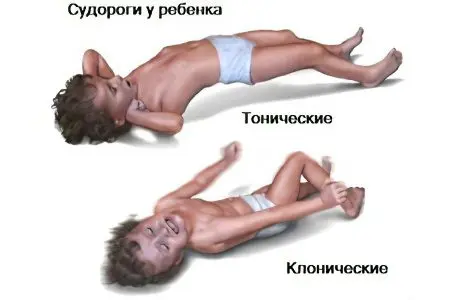
Seizures in children are quite common. They can happen due to many reasons. The most common of these is that the brain in young children is in the process of development, which causes increased excitability of the baby’s central nervous system. The walls of blood vessels in children are very thin, which makes it easy for infections and harmful factors to penetrate. As a result of this influence, the child may develop cerebral edema, which is accompanied by convulsions.
Also, various factors that affect the development of the child in the womb, during childbirth and in the first few months of a baby’s life can lead to the appearance of seizures.
Epileptic seizures in children
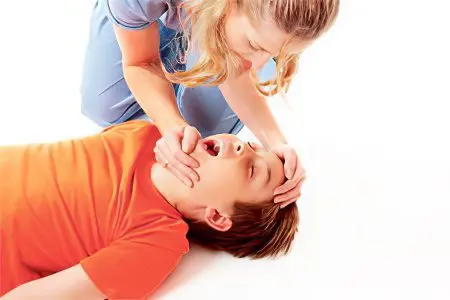
All seizures in children are divided into two groups – non-epileptic and epileptic, and the former can develop into the latter over time. The diagnosis of “epilepsy” to a child can only be made by a doctor, having thoroughly studied the history of his illness. At the same time, the specialist pays attention not only to what influence the baby was exposed to, but also whether he has a hereditary predisposition to seizures.
If there is no reason to think that the parents could have passed on the disease to the child, the central nervous system of the child is not affected, the electroencephalogram does not show characteristic changes, and there are no specific personality traits in the child under five years of age, then doctors refrain from diagnosing epilepsy.
Non-epileptic seizures in children

Non-epileptic seizures in children are quite common and can be caused by a variety of problems. Asphyxia, birth injuries, congenital deformities and defects of the central nervous system, heart defects, diseases of the vascular system, and much more can cause convulsions in newborns.
In children of any age, seizures can be the result of intoxication, vaccinations, infectious diseases and metabolic disorders.
Due to the fact that the diagnosis is associated with serious research, after the first attack of seizures, the child must be hospitalized to find out the cause of this behavior of the body.
Below we consider the most common causes of seizures in children.
Choking convulsions in newborns
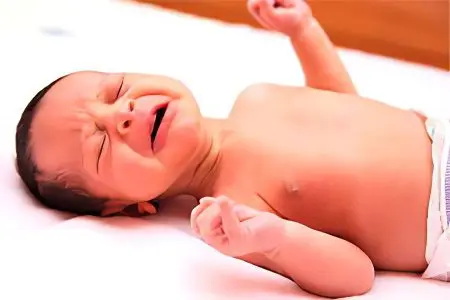
Suffocation, or asphyxia, is the most common cause of seizures in children. This occurs as a result of circulatory disorders, due to an excess of carbon dioxide and a lack of oxygen in the blood and tissues. Most often, this phenomenon leads to cerebral edema and petechial hemorrhages in it. In this case, the child needs immediate medical attention, since a long stay in this state leads to scarring of tissues and brain atrophy.
Convulsions against the background of asphyxia in newborns occur in cases where childbirth proceeds with complications – the umbilical cord wraps around the baby’s neck, amniotic fluid departs prematurely, labor is delayed or placental abruption occurs.
Convulsions stop almost immediately after the child is removed from the state of asphyxia. In this case, the cerebral edema disappears and the condition of the newborn returns to normal.
Convulsions due to birth trauma in children
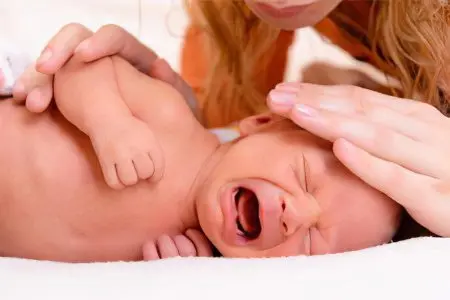
Intracranial birth injuries in children are most often accompanied by convulsions due to cerebral hemorrhages. In this case, they are usually local in nature – there is a spasm of the muscles of the face or limbs. Generalized muscle weakness may also be observed, as an extreme manifestation of the manifestation – generalized convulsions of the whole body. As a rule, in this case, the child’s face or the whole body turns blue, breathing becomes difficult, and vomiting may occur.
If a newborn has intracranial bleeding and is not stopped in time, then convulsions may appear on the fourth or fifth day after birth as a result of an increasing hematoma.
There are cases when such convulsions appear later – after two or even three months, but already in a fairly stable form. This is due to damage to the brain tissue due to its scarring, the appearance of adhesions or cysts. The impetus for a seizure in this case can be an injury, a preventive vaccination or an infection.
Convulsions in infectious diseases in children
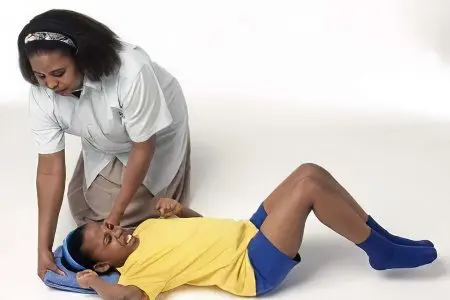
Convulsions during infectious diseases are prone to both children who have suffered birth injuries and healthy babies. This happens due to the toxicity of the virus that attacks the body and affects the nervous system.
Most often, seizures appear in young children at the time of the acute phase of diseases such as SARS and influenza with fever.
In the case of childhood infectious diseases (measles, rubella and chicken pox), convulsions occur at the peak of the rash.
With meningitis, encephalitis and other neuroinfections, convulsions manifest themselves in the tension of the whole body, are accompanied by cerebral edema, increased intracranial pressure, and, as a rule, disappear after the temperature normalizes.
Other causes of seizures in children

Sometimes seizures in children occur as a reaction to the vaccine. This problem is especially acute for babies who have suffered birth injuries, asphyxia or exudative diathesis. Since these children have a high degree of convulsive readiness, preventive vaccinations are contraindicated for them.
Another problem that is no less relevant for children, leading to convulsive seizures, is a metabolic disorder, in which the body lacks such trace elements as potassium, magnesium and calcium. Convulsions in this case are most often manifested by a distortion of the face.
All manifestations of seizures in children in infancy are most often associated with congenital pathologies or birth injuries. If they appeared on the background of infectious or other diseases and did not stop after the child recovered, then it is necessary to consult a doctor to exclude the possibility of developing epilepsy.
Febrile seizures in children
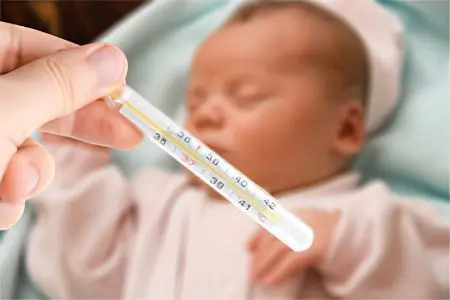
Febrile convulsions in children can develop only up to a certain age – up to 5-6 years. Muscle spasms in this case occur against the background of high body temperature, during any disease. The most dangerous period in terms of the development of febrile seizures considers the age from 6 months to 1,5 years. They develop in about 5% of children. However, if such convulsions occurred at least once, then the probability of their repetition is 30%.
Convulsions accompany influenza and SARS, teething of milk teeth, allergic and post-vaccination reactions of the body. At the same time, even a decrease in body temperature with the help of antipyretics does not prevent their development.
Convulsions manifest approximately 24 hours after the onset of fever. They can be simple or complex. With simple cramps, the arms or legs tremble, and with complex cramps, many muscles are involved in the process. In the latter case, the child loses consciousness. At the same time, at first it begins to reduce the legs, then the hands and the whole body are involved in the pathological process. The baby’s chin will be raised up, the head will be thrown back, the skin will turn blue, sweating will increase, and there will be profuse salivation.
During an attack, the child may stop breathing for a short period of time. When the peak is passed, the back begins to relax, then the face, and lastly the lower limbs. After such convulsions, the child experiences severe weakness and wants to sleep very much.
First aid for seizures in children
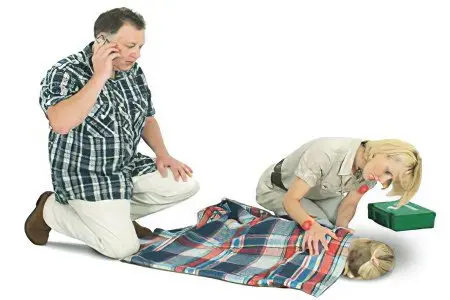
If a child develops convulsions, then the first priority of the parents is to call an ambulance team. You can not panic, you need to remember the time of the onset of the attack and what preceded it. All information must be communicated to the arriving doctors. You can record an attack on video if you can’t describe it in words.
A child with convulsions should be laid on a hard and even surface. The baby should lie on its side, this will allow him not to choke on saliva or vomit. If the child’s legs are reflexively pulled up to the stomach, then there is no need to straighten them. Under the head you need to put a roller of a towel.
Be sure to free the airways by clearing the mouth of mucus with a handkerchief or napkin. If there is a possibility that the child has an epileptic seizure, then a wooden object, such as a spoon, should be inserted between the teeth. Previously, this item is wrapped with a cloth. You can also tie a knot in a towel and insert it into your child’s mouth. This will avoid severe injury to the tongue.
To ensure the flow of fresh air, you need to open the windows. Nothing else should be done on your own, you must wait for the arrival of the doctors.
The following actions are prohibited:
During a spasm, you should not try to give the child water or other drinks to drink.
Do not give your child any medicines.
You can not try to unclench your teeth and insert iron objects into your mouth. By such actions, you can simply break them, and small parts will enter the respiratory tract, which will lead to an attack of suffocation.
You should not try to straighten limbs that are cramped, as this increases the likelihood of a fracture.
You can not pour cold water on the child, give him artificial respiration, perform a heart massage if he continues to breathe on his own.
Treatment
Doctors who arrived at the scene should receive as much information as possible about what caused the seizure. Resuscitation measures and their success depend on this.
If the child has uncomplicated febrile convulsions, or affective-respiratory convulsions, then after first aid, doctors can leave the baby at home. In other cases, the child is hospitalized.
[Video] Febrile seizures in a child: what to do? — Dr. Komarovsky:









